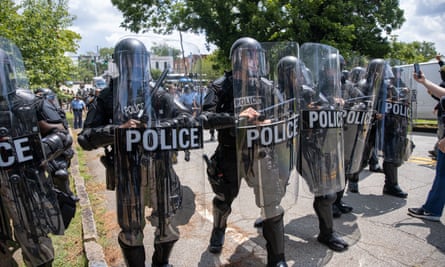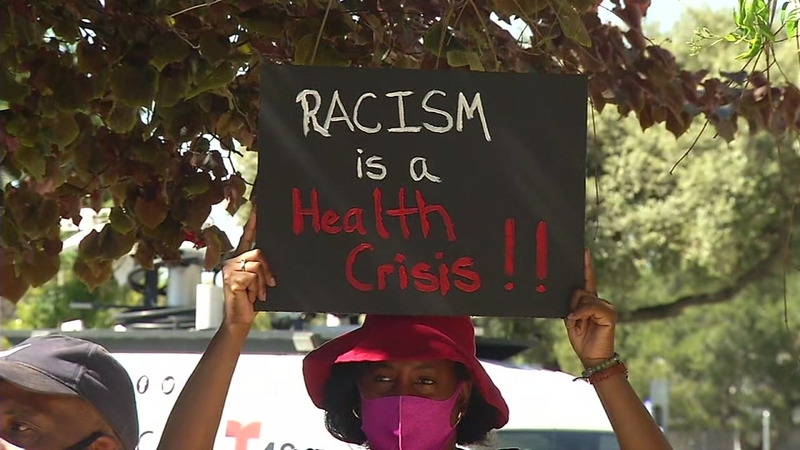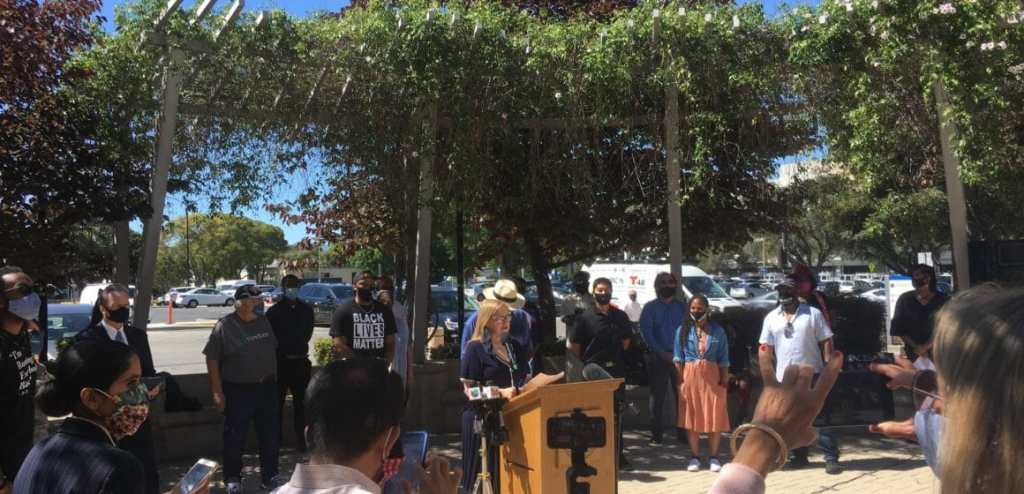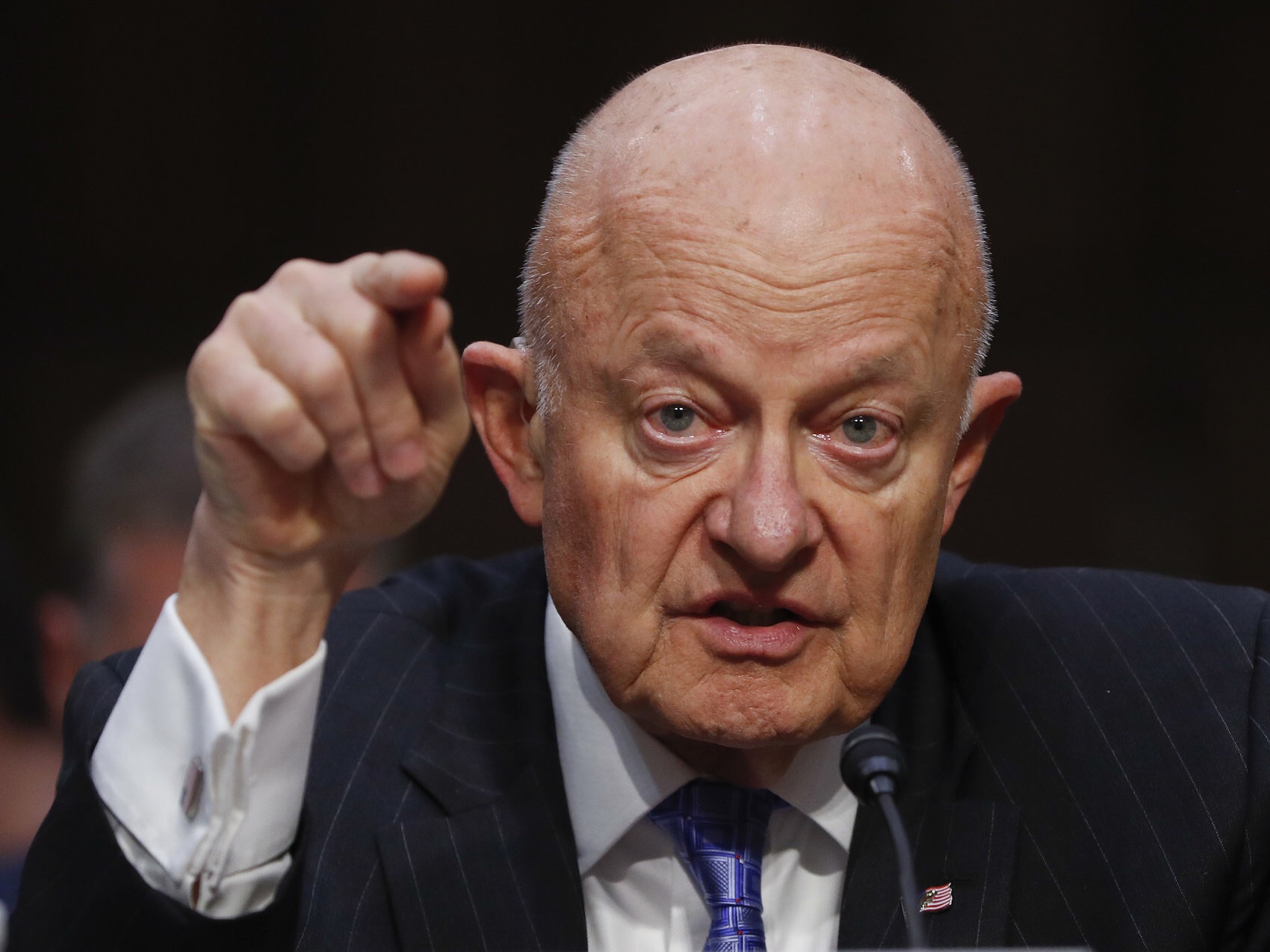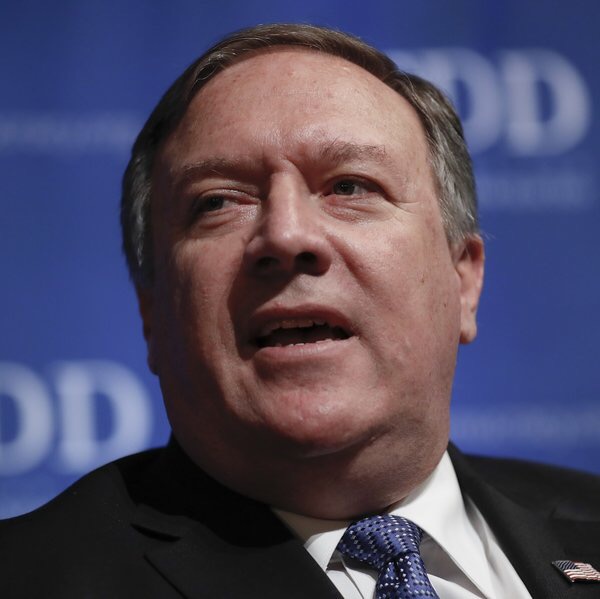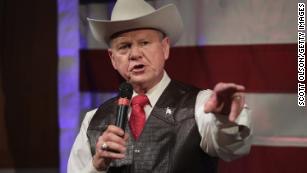https://www.nbcnews.com/storyline/harvey-weinstein-scandal/louis-c-k-film-i-love-you-daddy-shelved-after-n819651
Since Weinstein, Here’s a Growing List of Men Accused of Sexual Misconduct
by DAN CORey

In early October, reports surfaced that movie mogul Harvey Weinstein allegedly sexually harassed or assaulted multiple women over decades.
The public condemnation of Weinstein has seemingly emboldened others to come forward with allegations of sexual misconduct against celebrities — with studios, networks and major companies responding — in what some have dubbed the “Weinstein ripple effect.”
Here’s a list of high-profile men who have been accused of sexual harassment, assault or both in the wake of the Weinstein scandal:
Harvey Weinstein
Number of accusers:More than 80
<img class=”img-responsive img_inline” src=”https://media4.s-nbcnews.com/j/newscms/2017_41/2185926/171011-harvey-weinstein-se-1159p_b6af79cf9c7e7f945ccca10bb70bdf22.nbcnews-fp-360-360.jpg” alt=”Image:” title=”'Lion' Press Junket – 12th Zurich Film Festival” />
![]()
Harvey Weinstein speaks at an event for the film “Lion” in 2016. Alexander Koerner / Getty Images file
Hollywood mogul Harvey Weinstein was fired from the studio he co-founded after a wave of employees and actresses, including Gwyneth Paltrow and Angelina Jolie, alleged sexual harassment and assault in explosive back-to-back reports in The New York Times and The New Yorker.
Asia Argento, an Italian actress who told The New Yorker she was sexually assaulted by Weinstein in 1997, tweeted a list of names of more than 80 women who had allegedly been sexually harassed, assaulted, raped or molested by Weinstein dating back to the late 1970s. Argento said she compiled the list with help from other Weinstein accusers.
Actress Paz de la Huerta accused the disgraced mogul of raping her in 2010, Vanity Fair reported.
Weinstein has denied all allegations that he engaged in non-consensual sex with women, and no criminal charges have been brought against him. “Any allegations of non-consensual sex are unequivocally denied by Mr. Weinstein,” Weinstein’s spokeswoman, Sallie Hofmeister, said in a statement.
Ben Affleck
Number of accusers: 2
<img class=”img-responsive img_inline” src=”https://media3.s-nbcnews.com/j/newscms/2017_41/2185951/171011-ben-affleck-se-1220p_4f855ef7328a836a59e362fb1324f319.nbcnews-fp-360-360.jpg” alt=”Image: Actor Ben Affleck arrives at the premiere of Warner Bros Pictures' "The Accountant"” title=”Image: Actor Ben Affleck arrives at the premiere of Warner Bros Pictures' "The Accountant"” />
![]()
Ben Affleck arrives at the premiere of “The Accountant” in 2016. Gregg DeGuire / WireImage file
Hours after actor Ben Affleck released a statement condemning Harvey Weinstein’s alleged sexual misconduct, Affleck was accused of groping Hilarie Burton, an actress and former host of MTV’s “Total Request Live,” in the early 2000s.
“I was a kid,” Burton, now 35, said on Twitter. In a follow-up post, she included a video showing the uncensored “TRL” cold open in which she says, in apparent reference to Affleck, “He comes over and tweaks my left boob.”
“I acted inappropriately toward Ms. Burton and I sincerely apologize,” Affleck said on Twitter.
Makeup artist Annamarie Tendler also accused Affleck of inappropriately grabbing her during a 2014 party. “I would also love to get an apology from Ben Affleck who grabbed my ass at a Golden Globes party in 2014,” she said on Twitter, further describing the incident in follow-up posts.
Affleck told The Associated Press on Nov. 5 that he is “looking at my own behavior and addressing that and making sure I’m part of the solution.”
His spokesman did not immediately respond to a request for comment.
Roy Price
Number of accusers: 1
<img class=”img-responsive img_inline” src=”https://media1.s-nbcnews.com/j/newscms/2017_44/2210746/171101-roy-price-ac-512p_9107c85c57bc384132a7756d145da078.nbcnews-fp-360-360.jpg” alt=”Image: Roy Price during Amazon's premiere screening of "Transparent" in downtown Los Angeles” title=”Image: Roy Price during Amazon's premiere screening of "Transparent" in downtown Los Angeles” />
![]()
Roy Price, director of Amazon Studios, poses during Amazon’s premiere screening of the TV series “Transparent” in 2014. Kevork Djansezian / Reuters file
Roy Price, the Amazon Studios chief, resigned from his job after reports surfaced of his alleged sexual misconduct toward an Amazon TV producer, CNBC reported.
“The Man in the High Castle” producer Isa Hackett said she and Price had been promoting the show in 2015 at Comic-Con in San Diego when they wound up in a taxi together with another former Amazon executive, according to The Hollywood Reporter.
“We take seriously any questions about the conduct of our employees,” an Amazon spokesperson said in a statement to The Hollywood Reporter. “We encourage people to raise any concerns and we make it a priority to investigate and address them. Accordingly, we looked closely at this specific concern and addressed it directly with those involved.”
A spokesperson for Price declined to comment to The Hollywood Reporter.
Oliver Stone
Number of accusers: 1
<img class=”img-responsive img_inline” src=”https://media2.s-nbcnews.com/j/newscms/2016_37/1708641/160914-oliver-stone-jsw-1112a_8af392f5e8639716adda81fefd713d0b.nbcnews-fp-360-360.jpg” alt=”Image: Director Oliver Stone attends the premiere of the film "Snowden" in Manhattan, New York” title=”Image: Director Oliver Stone attends the premiere of the film "Snowden" in Manhattan, New York” />
![]()
Director Oliver Stone attends the premiere of the film “Snowden” in 2016. ANDREW KELLY / Reuters
Actress and former Playboy model Carrie Stevens accused writer and director Oliver Stone of groping her at a party during the 1990s in a tweet responding to Stone’s remarks about the Harvey Weinstein scandal.
“He was really cocky, had this big grin on his face like he was going to get away with something,” Stevens later told The New York Daily News, adding:
Stone has not responded publicly to Stevens’ allegation, but Stone’s initial response to the sexual misconduct accusations against Harvey Weinstein also caused controversy.
“It’s not easy what he’s going through,” Stone said. “I’m a believer that you wait until this thing gets to trial. I believe a man shouldn’t be condemned by a vigilante system.”
Bob Weinstein
Number of accusers: 1
<img class=”img-responsive img_inline” src=”https://media4.s-nbcnews.com/j/newscms/2017_42/2193946/171018-bob-weinstein-brother-harvey-se-411p_1f640bdf1679dc94b54d8a1510366777.nbcnews-fp-360-360.jpg” alt=”Non Weinstein” title=”Non Weinstein” />
![]()
Miramax co-founder Bob Weinstein appears at a premiere of “Sin City” in 2005. Chris Pizzello / AP file
Five days after blasting his brother, Harvey Weinstein, as a “very sick man” and a “world class liar,” Bob Weinstein was accused of making repeated romantic advances to a showrunner and refusing to take no for an answer. It was first reported by Variety.
Amanda Segel, an executive producer of “The Mist,” a Weinstein Co. drama that aired on Spike TV, said Bob Weinstein began harassing her in the summer of 2016 by repeatedly asking her to join him for private dinners.
The harassment allegedly occurred on and off for about three months, until Segel’s lawyer informed Weinstein Co. executives that she would leave the show if Bob Weinstein continued to contact her for personal matters.
“Variety’s story about Bob Weinstein is riddled with false and misleading assertions by Ms. Segel and we have the emails to prove it,” Bert Fields, Bob Weinstein’s lawyer, said in part, adding: “There is no way in the world that Bob Weinstein is guilty of sexual harassment.”
John Besh
Number of accusers: Multiple
<img class=”img-responsive img_inline” src=”https://media3.s-nbcnews.com/j/newscms/2017_43/2200641/171024-chef-john-besh-njs-1138a_93408e4f6191e2a2a266aef440f342fb.nbcnews-fp-360-360.jpg” alt=”Image: Chef John Besh” title=”Image: Chef John Besh” />
![]()
Chef John Besh attends a benefit in New York in 2015. Brad Barket / Invision via AP
Celebrity chef John Besh, a prominent fixture of the New Orleans culinary scene, stepped down from the company he founded after more than two dozen current and former members of the restaurant group alleged they were sexually harassed by various employees, including Besh, while working for the company.
Twenty-five women described a hostile work environment where female employees faced unwanted advances, sexually inappropriate comments and, in some cases, superiors attempting to leverage their authority in return for sex, according to an investigation by NOLA.com and the Times-Picayune. The accusers also said that women who complained about being harassed were punished or ignored.
Besh has been credited with helping to make New Orleans a culinary destination after Hurricane Katrina. He said in a statement that he had a “consensual relationship” with a member of his team two years ago.
“Since then I have been seeking to rebuild my marriage and come to terms with my reckless actions given the profound love I have for my wife, my boys and my Catholic faith,” he said in the statement. “I also regret any harm this may have caused to my second family at the restaurant group, and sincerely apologize to anyone past and present who has worked for me who found my behavior as unacceptable as I do.”
James Toback
Number of accusers: Multiple
<img class=”img-responsive img_inline” src=”https://media2.s-nbcnews.com/j/newscms/2017_42/2198071/171022-james-toback-se-407p_83230cc673c795ae764add2a29b80de6.nbcnews-fp-360-360.jpg” alt=”Image: James Toback attends the New York premiere of the HBO documentary film "Night Will Fall"” title=”Image: James Toback attends the New York premiere of the HBO documentary film "Night Will Fall"” />
![]()
James Toback attends the New York premiere of the HBO documentary film “Night Will Fall” in 2015. Stephen Lovekin / Getty Images for HBO
More than 200 additional women contacted The Los Angeles Times in response to its initial investigation, in which 38 women described similar instances of sexual harassment from veteran Hollywood writer and director James Toback.
Toback has written or directed more than a dozen films, including “Tyson,” “The Pick-Up Artist” and “Bugsy,” for which he received an Oscar nomination.
Toback denied the allegations to The Times, saying that he had either never met his accusers or only did “for five minutes and have no recollection” of them. He also claimed it would have been “biologically impossible” for him to engage in the behavior the women described throughout the last 22 years, citing diabetes and a heart condition requiring medication.
Leon Wieseltier
Number of accusers: Multiple
<img class=”img-responsive img_inline” src=”https://media3.s-nbcnews.com/j/newscms/2017_44/2209296/101031-leon-wieseltier-ac-507p_d993ba3aa4038e4e981f6df2fe931dc2.nbcnews-fp-360-360.jpg” alt=”Image: Leon Wieseltier” title=”Image: Leon Wieseltier” />
![]()
Leon Wieseltier poses in 2013 in Tel Aviv. Dan Balilty / AP file
The benefactors of a new magazine set to be edited by Leon Wieseltier — a literary critic, former contributing editor for The Atlantic and a former New Republic editor — ended their business relationship with him after sexual harassment allegations surfaced, The New York Times reported. The Atlantic severed its ties with him on Oct. 27.
“For my offenses against some of my colleagues in the past I offer a shaken apology and ask for their forgiveness,” Wieseltier told The Times in an email. “The women with whom I worked are smart and good people. I am ashamed to know that I made any of them feel demeaned and disrespected. I assure them I will not waste this reckoning.”
Terry Richardson
Number of accusers: Multiple
<img class=”img-responsive img_inline” src=”https://media2.s-nbcnews.com/j/newscms/2017_45/2220781/171109-terry-richardson-mn-1122_eac31af8789a4079aed14892cd0893fa.nbcnews-fp-360-360.jpg” alt=”” title=”” />
![]()
Terry Richardson sits in the front row at New York Fashion Week in 2017. Swan Gallet / REX/Shutterstock via AP
Celebrity photographer Terry Richardson was banned from working with Condé Nast — the publisher of glossy magazines like Vogue, Glamour, GQ and Vanity Fair — after allegations surfaced of sexual misconduct during photo shoots.
“[Richardson] is an artist who has been known for his sexually explicit work so many of his professional interactions with subjects were sexual and explicit in nature, but all of the subjects of his work participated consensually,” a representative for Richardson said in a statement to E! News.
George H.W. Bush
Number of accusers: 4
<img class=”img-responsive img_inline” src=”https://media1.s-nbcnews.com/j/newscms/2017_43/2201976/171025-george-hw-bush-heather-lind-njs-831a_792ba43e6f7c168259d4fffc80d9d6c0.nbcnews-fp-360-360.jpg” alt=”Image: Former President George H.W. Bush poses for a photo with the cast of AMC's series TURN” title=”Image: Former President George H.W. Bush poses for a photo with the cast of AMC's series TURN” />
![]()
Former President George H.W. Bush poses with the cast of AMC’s series TURN in Houston in 2014. Aaron M. Sprecher / Invision for AMC
Four women from separate incidents came forward to accuse former President George H.W. Bush of touching them from behind while he told a dirty joke as they posed beside him for photos.
Television actress Heather Lind was first to accuse the former president, and said in a now-deleted Instagram post that Bush inappropriately touched her during a 2014 screening of her AMC series, “TURN: Washington’s Spies,” in Houston. Lind appears alongside Bush, who’s seated in a wheelchair, while his wife, former First Lady Barbara Bush, was also present.
“At age 93, President Bush has been confined to a wheelchair for roughly five years, so his arm falls on the lower waist of people with whom he takes pictures,” Bush spokesman Jim McGrath said in a statement. “To try to put people at ease, the president routinely tells the same joke — and on occasion, he has patted women’s rears in what he intended to be a good-natured joke.”
New York actress Jordana Grolnick also accused the former president of inappropriate touching, followed by author Christina Baker Kline and Amanda Staples, a Republican candidate for Maine’s Senate. McGrath said the former president apologizes to anyone he has offended.
Mark Halperin
Number of accusers: 12
<img class=”img-responsive img_inline” src=”https://media3.s-nbcnews.com/j/newscms/2017_44/2205856/sexual_harassment-hollywood-the_latest_34642-jpg-5076e_59f95880dfe1dde3d9c1c246a13dce4b.nbcnews-fp-360-360.jpg” alt=”Image: Mark Halperin, Mark McKinnon” title=”Image: Mark Halperin, Mark McKinnon” />
![]()
Mark Halperin appears at the Showtime Critics Association summer press tour in Beverly Hills in 2016. Richard Shotwell / AP
NBC News ended its relationship with senior political analyst Mark Halperin after multiple reports surfaced that he sexually harassed at least a dozen women while serving as political director for ABC News.
“I am profoundly sorry for the pain and anguish I have caused by my past actions,” Halperin said in a statement on Twitter. “I apologize sincerely to the women I mistreated.”
Halperin, a veteran political journalist with multiple book deals and projects, has also seen HBO, Showtime and Penguin Press have ended their associations with him.
Kevin Spacey
Number of accusers: Multiple
<img class=”img-responsive img_inline” src=”https://media3.s-nbcnews.com/j/newscms/2017_44/2209021/171031-kevin-spacey-se-109p_fe0dc85a37347edabc40e2f39b77bf9d.nbcnews-fp-360-360.jpg” alt=”Image: Kevin Spacey attends the Build Series to discuss his new play "Clarence Darrow"” title=”Image: Kevin Spacey attends the Build Series to discuss his new play "Clarence Darrow"” />
![]()
Kevin Spacey discusses his new play “Clarence Darrow” on May 24, 2017 in New York. Daniel Zuchnik / WireImage via Getty Images file
Broadway veteran Anthony Rapp accused “House of Cards” star Kevin Spacey of climbing on top of him in a sexual manner when he was 14 years old and Spacey was 26 or 27 at a party in Spacey’s New York apartment.
“I honestly do not remember the encounter, it would have been over 30 years ago,” Spacey wrote in a statement on Twitter. “But if I did behave then as he describes, I owe him the sincerest apology for what would have been deeply inappropriate drunken behavior, and I am sorry for the feelings he describes having carried with him all these years.”
Mexican actor Roberto Cavazos also accused Spacey of inappropriate touching during an encounter at the Old Vic theater in London, where Spacey served as artistic director from 2004 until 2015.
Spacey was later accused by eight people who currently or previously worked on the “House of Cards” set of creating a “toxic” work environment, CNN reported. Among those eight unnamed accusers, some also claimed the actor sexually harassed or assaulted them.
Harry Dreyfuss, an actor and son of Oscar winner Richard Dreyfuss, has accused Spacey of groping him in 2008. The younger Dreyfuss claimed in a Buzzfeed article that Spacey put his hand on his thigh and later groped his crotch when Dreyfuss was 18. Spacey “absolutely denies the allegations” from Dreyfuss, his lawyer Bryan Freedman told Buzzfeed.
Heather Unruh, a former television anchor, told reporters that Spacey bought her then 18-year-old son “drink after drink after drink” at a crowded restaurant in Nantucket, Massachusetts, in July 2016, and then “stuck his hand inside my son’s pants and grabbed his genitals.”
NBC News has not verified the allegations. Spacey’s attorney did not respond to a request for comment.
Earlier, his representatives said in a statement that “Kevin Spacey is taking the time necessary to seek evaluation and treatment.”
Michael Oreskes
Number of accusers: 8
<img class=”img-responsive img_inline” src=”https://media1.s-nbcnews.com/j/newscms/2017_44/2210381/171101-michael-oreskes-portrait-ew-1226p_614f7adf3f814e74343c067b2f094b8b.nbcnews-fp-360-360.jpg” alt=”Image: Mike Oreskes” title=”Image: Mike Oreskes” />
![]()
Former Associated Press Vice President and Senior Managing Editor Mike Oreskes poses at AP headquarters in 2015. Chuck Zoeller / AP file
NPR news chief Michael Oreskes was ousted from his post on Nov. 1 after two women alleged he suddenly kissed them while discussing job prospects when he was The New York Times’ Washington bureau chief in the 1990s.
Since the original allegations were made public, 5 women at NPR have filed a formal harassment complaint against Oreskes, according to the Washington Post, bringing the number of accusers up to eight. The Post reported that the latest allegations occurred during the past three years.
Oreskes, who was placed on leave by NPR after The Post’s report, said he was deeply sorry to the people he hurt.
“My behavior was wrong and inexcusable, and I accept full responsibility,” he said.
Jeremy Piven
Number of accusers: 3
<img class=”img-responsive img_inline” src=”https://media2.s-nbcnews.com/j/newscms/2017_44/2209981/171101-jeremy-piven-njs-820a_e99d5dfdad80dabb3f6f42392011d44b.nbcnews-fp-360-360.jpg” alt=”Image: Jeremy Piven attends the Emmy Awards” title=”Image: Jeremy Piven attends the Emmy Awards” />
![]()
Jeremy Piven attends the Emmy Awards in Los Angeles in 2017. Mike Blake / Reuters
On Twitter, actress and reality television star Ariane Bellamar accused “Entourage” actor Jeremy Piven of groping her once on set, and again at the Playboy Mansion.
Bellamar claims that Piven grabbed her breasts without her consent after cornering her in his trailer on the “Entourage” set. Addressing the actor directly, Bellamar tweeted, “I tried to leave; you grabbed me by the ass, looked at yourself in the mirror [and] said what a ‘beautiful couple’ we made.” It is unclear whether she was referring to the set of the “Entourage” television series or its movie sequel.
Days later, actress Cassidy Freeman said in an Instagram post that Piven of making unwanted sexual advances toward her.
“I unequivocally deny the appalling allegations being peddled about me. It did not happen,” Piven said in a statement. “It takes a great deal of courage for victims to come forward with their histories, and my hope is that the allegations about me that didn’t happen, do not detract from stories that should be heard.”
About a week later, Tiffany Bacon Scourby told People that Piven exposed himself, rubbed his genitals against her and ejaculated on her clothing in October 2003 in New York City. She said she told a longtime friend immediately after the alleged incident and People said the friend corroborated the allegation.
Piven did not immediately return a request for comment about Scourby’s allegation.
Dustin Hoffman
Number of accusers: 2
<img class=”img-responsive img_inline” src=”https://media3.s-nbcnews.com/j/newscms/2017_44/2210451/171101-dustin-hoffman-ew-1256p_d907b45eb9488f9b7d158844f6203bb0.nbcnews-fp-360-360.jpg” alt=”Image: Dustin Hoffman” title=”Image: Dustin Hoffman” />
![]()
Dustin Hoffman arrives at the Hollywood Foreign Press Association Grants Banquet in Beverly Hills in 2017. Jordan Strauss / Invision/AP file
Anna Graham Hunter was a 17-year-old production assistant for the 1985 film adaptation of “Death of a Salesman” when actor Dustin Hoffman grabbed her and used sexually explicit language with her, she said in a first-person account published by The Hollywood Reporter.
Playwright Wendy Riss Gatsiounis also said Hoffman sexually harassed her in 1991 and allegedly propositioned her and attempted to persuade her to accompany him to a store in a nearby hotel.
“I have the utmost respect for women and feel terrible that anything I might have done could have put her in an uncomfortable position,” Hoffman told The Hollywood Reporter. “I am sorry. It is not reflective of who I am.”
Brett Ratner
Number of accusers: 6
<img class=”img-responsive img_inline” src=”https://media2.s-nbcnews.com/j/newscms/2017_44/2210446/171101-brett-ratner-ew-1256p_d907b45eb9488f9b7d158844f6203bb0.nbcnews-fp-360-360.jpg” alt=”Image: Brett Ratner” title=”Image: Brett Ratner” />
![]()
Brett Ratner arrives at the Wolfgang Puck’s Post-Hollywood Walk of Fame Star Ceremony Celebration in Beverly Hills in 2017 Willy Sanjuan / Invision/AP file
Actresses Olivia Munn, Katharine Towne, Jamie Ray Newman, Natasha Henstridge, Jorina King and model and singer Eri Sasaki all alleged varying accounts of inappropriate behavior from director Brett Ratner, The Los Angeles Times reported.
Munn and Henstridge both told The Times they experienced separate incidents early in their careers in which Ratner masturbated in front of them. Munn said she was delivering food as a favor in 2004 to what she believed was Ratner’s empty trailer, and was frightened to find him inside.
Ratner’s attorney, Martin Singer, staunchly denied each woman’s allegations and claimed Munn’s account was “a complete lie.”
“I have represented Mr. Ratner for two decades, and no woman has ever made a claim against him for sexual misconduct or sexual harassment,” Singer said in a letter to The Times. “Furthermore, no woman has ever requested or received any financial settlement from my client.”
In light of the allegations, Ratner said in a statement that he is choosing to “step away from all Warner Bros.-related activities.”
“I don’t want to have any possible negative impact to the studio until these personal issues are resolved,” Ratner said in the statement.
Ed Westwick
Number of accusers: 2
<img class=”img-responsive img_inline” src=”https://media3.s-nbcnews.com/j/newscms/2017_45/2220391/ed-westwick-ejo-110817_e1afacfaa91310472f4534370da85e53.nbcnews-fp-360-360.jpg” alt=”Image: Ed Westwick” title=”Image: Ed Westwick” />
![]()
Ed Westwick arrives at the BAFTA Awards Season Tea Party at the Four Seasons Hotel in Los Angeles on Nov. 7, 2017. Jordan Strauss / AP
Actress Kristina Cohen wrote a Facebook post saying that she and a boyfriend had gone to Ed Westwick’s home three years ago.
Cohen said she took a nap in one of the rooms, and that when she woke up, the “Gossip Girl” actor was sexually assaulting her. She said she tried to fight him off, but he was too strong.
“I couldn’t speak, I could no longer move. He held me down and raped me,” she wrote.
Westwick responded the following day on social media to deny the allegations: “I do not know this woman. I have never forced myself in any manner, on any woman. I certainly have never committed rape.”
The Los Angeles Police Department said Cohen filed a police report, which confirms an investigation but not evidence of a crime. There was no police report filed at the time of the alleged incident, sources said.
Following Cohen’s post, former actress Aurélie Wynn shared on Facebook a claim that she was raped by Westwick while taking a nap in July 2014.
Westwick later tweeted out a statement saying, “It is disheartening and sad to me that as a result of two unverified and provably untrue social media claims, there are some in this environment who could ever conclude I have had anything to do with such vile and horrific conduct. I have absolutely not, and I am cooperating with the authorities so that they can clear my name as soon as possible.”
Steven Seagal
Number of accusers: 2
<img class=”img-responsive img_inline” src=”https://media2.s-nbcnews.com/j/newscms/2017_45/2220431/171109-steven-seagall-mc-1243_2a1787e337bee65915486413be13a579.nbcnews-fp-360-360.jpg” alt=”Image: Steven Seagal” title=”Image: Steven Seagal” />
![]()
American actor Steven Seagal in Moscow. Mikhail Japaridze / TASS via Getty file
At least two actresses have accused Steven Seagal of sexual harassment. Actress Portia de Rossi tweeted that she once auditioned for the former action star in his office, where he “said how important it was to have chemistry off-screen as he sat me down and unzipped his leather pants.”
De Rossi said she ran out and told her agent. She didn’t say when the alleged incident occurred.
Actress Rae Dawn Chong told The Hollywood Reporter of a similar story. She said the talent agency that represented her from 1989-90 had her meet Seagal inside of his hotel room at night. She said he exposed himself to her and that after she told her agent what happened, it impacted her career. She later left the agency, she said, “because it was like a pimp situation.”
Other women have claimed Seagal acted inappropriately or strangely with them, but not specifically of sexual misconduct. Julianna Margulies, who co-starred with Seagal in 1991’s “Out for Justice,” said on SiriusXM that when she was 23, she was told by a casting director to go to Seagal’s hotel room at night.
Margulies said that when she got there, she was alone. Seagal “made sure that I saw his gun, which I had never seen a gun in real life,” the actress said. “And I got out of there unscathed.”
Reps for Seagal did not immediately respond to a request for comment from NBC News.
Louis CK
Number of accusers: 5
<img class=”img-responsive img_inline” src=”https://media4.s-nbcnews.com/j/newscms/2017_45/2221036/171109-louis-ck-performing-ew-256p_09a2855f00fa105d3c3e22b5ec6280cc.nbcnews-fp-360-360.jpg” alt=”Image: Comedian Louis C.K. performs onstage” title=”Image: Comedian Louis C.K. performs onstage” />
![]()
Comedian Louis C.K. performs onstage at 2014 Stand Up For Heroes at Madison Square Garden on Nov. 5, 2014 in New York. Andrew H. Walker / Getty Images file
Five women have accused Emmy-winning comedian and actor Louis CK of sexual misconduct dating back at least 15 years, The New York Times reported.
Louis CK, the creator and star of the FX series “Louie,” allegedly masturbated in front of two women comedians in 2002, The Times reported. Three other women told The Times about other instances of alleged sexual misconduct.
NBC News has not verified the allegations.
After being contacted by The Times for an interview, Louis CK’s publicist, Lewis Kay, said his client would not respond. “Louis is not going to answer any questions,” Kay wrote to The Times in an email.
In the exposé published in The Times, comedians Dana Min Goodman and Julia Wolov allege Louis CK in 2002 invited them to his hotel room in Colorado, undressed himself, and masturbated in front of them. Abby Schachner, a comedian who says she called Louis CK to invite him to one of her performances in 2003, claims she could hear him masturbating during their phone conversation. Rebecca Corry, a writer and actress, alleges Louis CK asked if he could masturbate in front of her while they appeared together on a television pilot in 2005.
